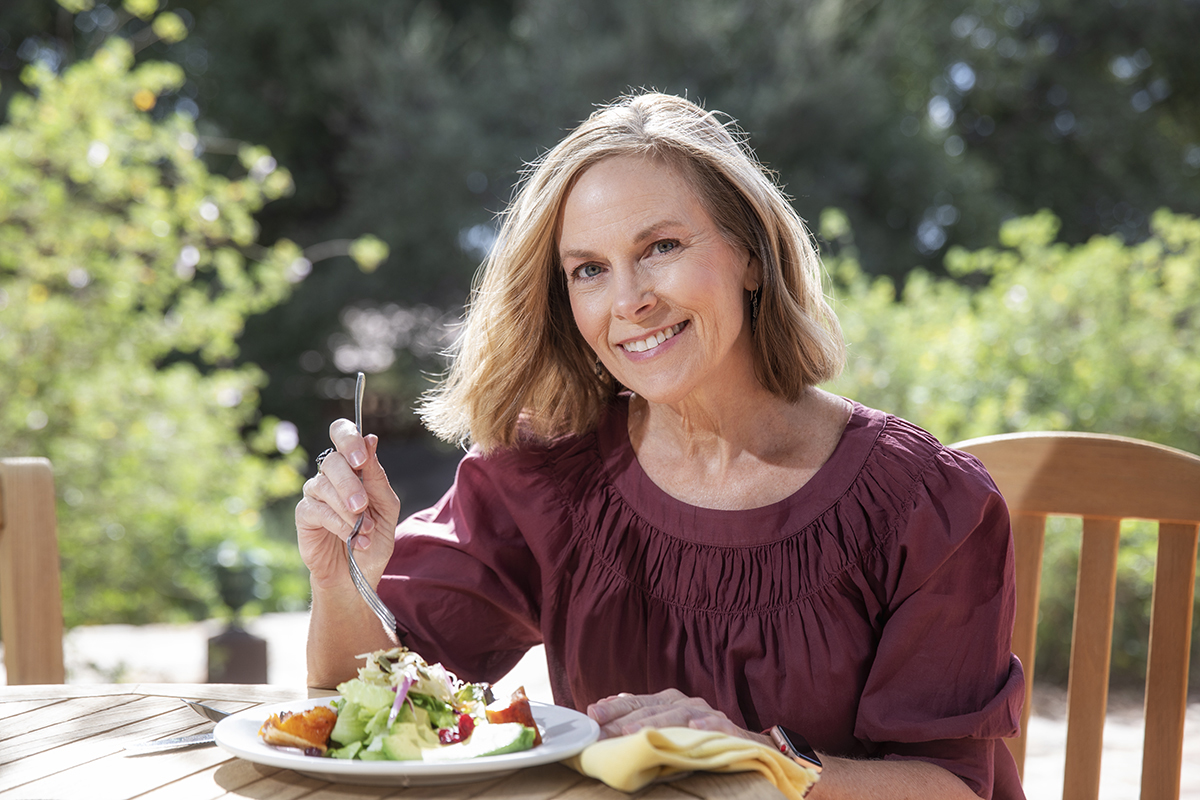Are You Eating Your Veggies?

This is a guest post by our Nutritional Director, Yvonne Nienstadt.
Did you know that June is National Fruit and Vegetable Month?
Fruits and veggies prevent disease. They can help you ward off heart disease and stroke, control blood pressure, prevent some types of cancer, avoid a painful intestinal ailment called diverticulitis, and guard against cataracts and macular degeneration – two common causes of vision loss as we age.
The US government has long recommended seven to nine servings of fruits and veggies a day. Did you know that only 21% of American men and 31% of American women consume that many servings a day (fries and ketchup don’t count!)? Sadly, the average is just three servings a day.
According to the article Vegetables and Fruits: Get Plenty Every Day, from Harvard’s School of Public Health, “The latest dietary guidelines call for five to thirteen servings of fruits and vegetables a day (2½ to 6½ cups per day), depending on one’s caloric intake. For a person who needs 2,000 calories a day to maintain weight and health, this translates into nine servings, or 4½ cups per day (2 cups of fruit and 2½ cups of vegetables).”
Ranch guests easily get more than this recommended amount per day. Many people have told me, “I would eat more at home if someone washed and prepped them for me.” Most stores now sell cleaned and chopped fruits and veggies, so there are fewer excuses not to incorporate them into your daily diet.
If you or your family members are not fond of certain veggies or fruits, use stealth. Wilt greens in a flavorful soup, or use them as a layer in a casserole such as lasagna. Steam and chill veggies and serve them with a favorite dip or dressing. Slice pears or apples and add a little peanut or other nut butter. Fill celery stalks with low-fat cream cheese or peanut butter. Adding grated or pureed veggies to soups, muffin recipes, beans, and casserole dishes can make them less obvious and indistinct. Encourage kids to try new foods, but always hand them a napkin and give them permission to politely spit it out if they don’t like the taste or texture.
For more information about daily vegetable servings, check out these articles:
WebMD’s 5-a-Day ‘Not Enough’ Fruits and Vegetables by Tim Locke
7 Servings Of Vegetables A Day May Possibly Preserve Death Away
Aside from fiber, vitamins, and minerals galore with little in the way of calories, fruits and veggies are loaded with plant-based medicines called phytochemicals. Also called nutraceuticals and functional foods, up to 10,000 of these powerful substances have been isolated to date. To name just five of them: lycopene in tomatoes and watermelons have anti-cancer properties; indoles and safroles in cabbage family foods are also anti-cancer agents; and both lutein in berries and zeaxanthin in winter squash prevent macular degeneration.
For more on these powerhouses check out the following:
What are Phytonutrients, How do They Work in the Body, and What Foods Contain Them?
An extensive list of phytochemicals and where they are found in foods can be found on Wikipedia’s List of Phytochemicals in Food.
Trying to lose weight? Eat more raw veggies and fruits. Vegetables are nearly free of calories (lettuce is nine calories per cup, the rest of the veggies are about 25 – 50 calories per cup). Fruits are typically between 50 – 100 calories per cup. Raw foods require a lot of chewing and because of this, they are hard to overeat. Your jaws start to get weary before you can overdo it! Also, studies show that it is harder for the body to access the calories stored inside the cells of raw food, so more of the calories just pass on through.
I am not a fan of 100% raw food because some nutrients are better absorbed when the cell walls are broken down during cooking. Dr. Joel Fuhrman’s position on the subject can be found here.
And now a final plug for The Ranch whole foods mostly plant-based diet: This study compared the satiety factor of High Energy Density (HED) foods (fats, meats, refined carbs) to Low Energy Density (LED) foods (vegetables, fruits, unrefined grains, and beans). The two groups had the same satiety level, but the participants eating the HED foods ate beyond the point of satiety and consumed nearly twice as many calories as the LED group. Visit this article and scroll down to the section titled, “Discussion” to read the conclusions.
To conclude, we wholeheartedly agree with writer Michael Pollan’s recommendation from his book In Defense of Food. The subtitle of the book, Eat Food Not Too Much Mostly Plants is singing the Ranch’s nutritional tune.
Still hungry for information? Check out the National Fruit and Veggie Month website.
I hope you are having a happy and healthy fruit and veggie month!


